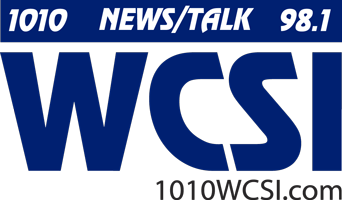Signs, Tags, or Labels…
Johnny-on-the-Spot … by John Foster …
When our oldest grandson was just a tyke, his Mom and Grandma had to removes the tags inside the collars of his t-shirts because “they bothered him”.
Tags, or labels are small pieces of paper, plastic or similar material attached to an object and giving information about it.
A label can also be a classifying phrase or name applied to a person or thing, especially one that is inaccurate or restrictive.
Is America ready to cut those labels off of our political shirt collars?
Let’s consider the historical ramifications of that.
Presently, the Democratic and Republican parties control the nation’s political landscape.
But polls indicate two-thirds of us are unhappy with the likely Presidential choices in the 2024 election.
A similar amount (63%) say they’re open to supporting a moderate independent Presidential candidate if Joe Biden and Donald Trump are the two options.
Here’s more to consider.
Sixteen percent of us consider ourselves to be “very conservative” or “very liberal” which indicates, to me that 84% of us prefer something other than either extreme.
Is the time right for a 3rd party to step up?
Historically, third parties have done more to influence the race between the GOP and the Dems that actually elect a 3rd option.
In 1968, Alabama governor George Wallace ran for the presidency as the American Independent Party candidate.
Wallace won the popular vote in Alabama, Arkansas, Georgia, Louisiana and Mississippi and grabbed 45 electoral votes.
But he wasn’t running to win the actual election.
He had hopes he could keep Richard Nixon or Hubert Humphrey from securing enough electoral votes to force the House of Representatives to decide the race.
In 2000, Ralph Nader’s “Green Party” collected 97,488 votes in Florida.
George W. Bush topped Al Gore by a mere 537 votes in that state, forcing a recount and eventually, the U.S. Supreme Court stepped in.
Remember “hanging chads”?
Political experts think most of those who voted for Nader would have been votes for Gore.
As recently as 2016, Green Party candidate Jill Stein had more total votes than Donald Trump’s narrow margins of victory in Pennsylvania, Michigan and Wisconsin.
Many think without the Green Party candidate running, Hillary Clinton wins.
Way back in 1912, Teddy Roosevelt, running on the progressive Bull Moose party ticket topped the GOP candidate, William Howard Taft, and Democrat Woodrow Wilson became President.
This election, we hear talk about the “No Labels” party.
Founded in 2010, this organization says, “We care about this country, more than the demands of any political party. Healthy disagreement is a good thing in our democracy. Principled debate leads to a better understanding on both sides and leads to better legislation and governance for the nation.”
Current federal campaign finance laws and lack of media attention have seriously hindered other efforts and the winner-takes-all standards with most state’s electoral votes is a roadblock.
But “No Labels” hopes to get on all ballots and offer a “unity ticket” by March 15th.
Earlier this year a letter was sent to the heads of the No Labels Party by individuals describing themselves as former U.S. Senators and Representatives, Democrats and Republicans, liberals and conservatives with “profound concerns about the health and stability of our republic.
This group contends that a No Labels presidential ticket could produce a constitutional crisis by triggering a “contingent election”, much like we experienced back in 1801.
These former elected officials feel a “contingent” election would be “calamitous”.
I think this reaction by this group indicates something to me.
They view the “No Labels” option as a threat to the two-party political status quo in America.
Considering the “status quo”, are we comfortable?
Since 1900, third vote options have attracted enough votes to arguably to change the outcomes of those Presidential elections.
Could we see a fourth in 2024?
